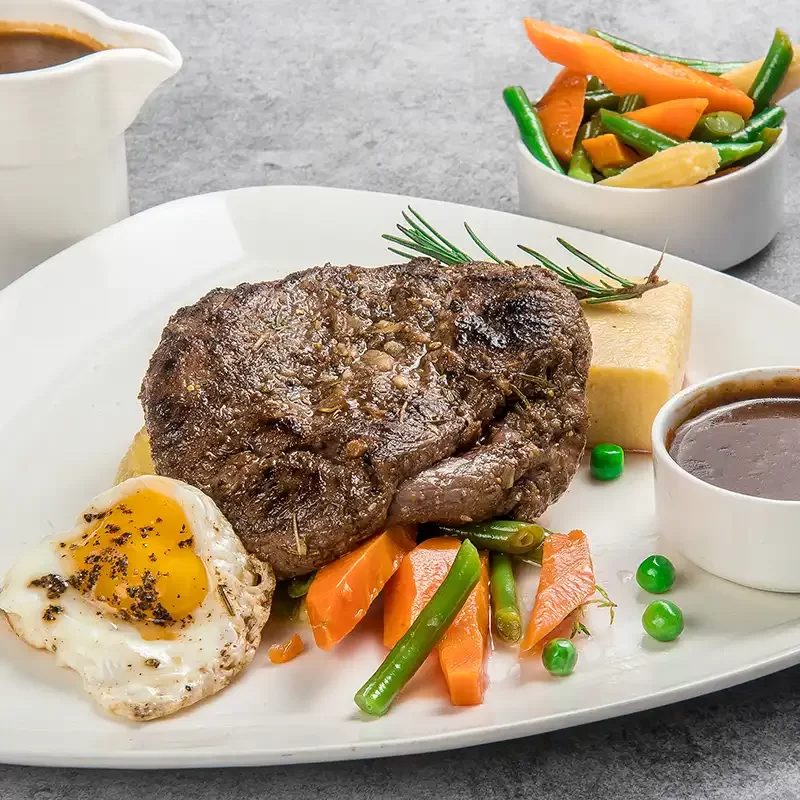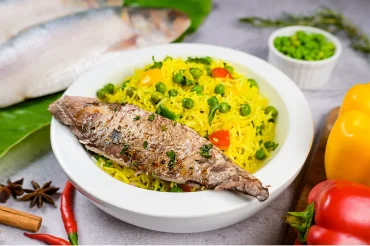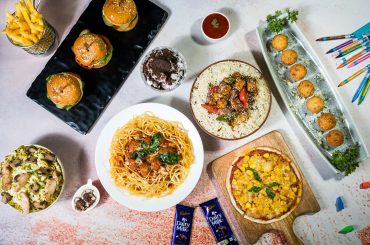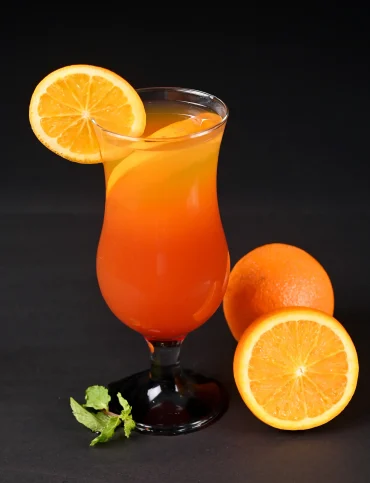The rich tapestry of foreign influxes in Kolkata (erstwhile Calcutta) has, over time, created a unique pattern of culinary influences. As each foreign traveller arrived here, mostly on business or as a settler, occasionally as a tourist, explorer or scholar, he left his indelible mark on the food map of the region. Inextricably tied up with the history of the region is the history of food evolution here, a fascinating tale of its own.
Looking at the Footprints of Time
Ancient Bengal, as per available records, had significant trade links with Persia, Arabia, and the Mediterranean countries from where businessmen arrived regularly hunting for exclusive cotton muslins. Between the 13th and 14th centuries, Bengal became a province of the Delhi Sultanate and was exposed to considerable Islamic influences. For a while, the region became a haven of Indo-Persian culture. An exchange with the Ming dynasty of China was also recorded around the same time. As the Mughal dynasty gained prominence, Bengal came under the suzerainty of the Mughal empire as its wealthiest province. There was considerable thrust on textiles and shipbuilding and some records claim the economy of Bengal far exceeded that of many smaller European empires a the time. The Nawabs of Bengal was semi-independent rulers who were largely under the influence of the Northern seat of Mughal power. The Marathas arrived – but as invaders and not settlers.
The Portuguese were the earliest to arrive from Europe and the first European settlement in Bengal was the Portuguese settlement of Chittagong (undivided Bengal). Then came the Dutch who set up several bases in places like Rajshahi, Dhaka, Mirzapur, Murshidabad, and Cossimbazar amongst others. Thereafter, arrived the English and we have records of the earliest English settlements dating back to the 1600s. If the England decides on a certain course of action, can arch-rival France choose to remain behind? Close on their heels, came another group of settlers, the French. They established a base in Chandannagore and also had a sizeable presence in Dhaka.
There were also small Danish and Austrian settlements as they too joined the bandwagon.
The Britishers, after assuming the role of rulers, brought Armenians from Europe to help them in various administrative tasks and the Armenian community came to reside in the city.
For centuries, the Jewish people have been living in Kolkata. The earliest Jews arrived in the late 18th century, soon established themselves as industrious entrepreneurs, and stayed on.
Yet another foreign community that came to make Kolkata its home were the Chinese. As per records, the very interesting story of first Chinese settler goes like this – his name was Tong Achew. He was a tea merchant who got shipwrecked in the Bay of Bengal and somehow managed to survive by landing ashore on the Hooghly. Once he got back on his feet, he proceeded to strike a deal with the English rulers and returned back to China to bring consignments of tea and more countrymen with him! And thereby, started a saga of Chinese settlements in and around Tiretti Bazar in Calcutta. Apparently, the Portuguese also brought Chinese forcefully as slave-labourers and employed them in factories here.
The great Anglo-Indian story emerged in the midst of it all as a distinct class of people with mixed European and Indian heritage (as European rulers began to have relationships with local women, even marrying them in several cases) established their own religious, social, and cultural identity in the region.
How the “Visitors” Influenced Bengal’s Kitchen – and Social Life
The food of the region has been deeply – repeat, deeply – influenced by the different nationalities who came to and livedin the city. Modern-day Bengali cuisine comprises of distinct Mughal, Anglo-Indian and European influences. Bengali food, in the current form, has also imbibed Chinese and South-Asian influences.
The Baghdadi Jews who came at some point of time set up some famous Jewish Bakeries that turned out wonderful savouries and confectionaries like puffs and pastries. The Anglo-Indian community introduced its own range ofimpressive and innovative cuisine.
The European community had introduced the ritual of tea and legendary tea parties. Baking became widespread after the settlement of Britishers. Baked confectioneries were popular as the British had popularised the celebration of Christmas. Chops and cutlets were British in origin but continue till today as popular snack. The pound cake became synonymous with local celebrations in winter. Local ingredients adapted to French and Italian cooking techniques, namely creamy sauces, lesser spices and a lot of baking and steaming came into elite Bengali households.
English and Jewish bakers such as Flury’s and Nahoum’s dominated the confectionery business. Western-style bread, locally called pau-roti became a common item in households. Firpo’s and Trincasfor the well-heeled as well as Indian Coffee House (formely Allen Hall) and other eminent eating places like Nizam’s and Paramount became popular haunts for city-dwellers, serving a range of dishes and drinks.
“The Portuguese are believed to have introduced potatoes, tomatoes, pineapples, cashews, peanuts, and tobacco to India, and these products were thoroughly assimilated into the regional cuisines, In Bengal, the Portguese may have introduced the technique of curdling milk that was not prevalent earlier. It became the base of several regional sweets, popularly known as Chana, says Shiladitya Chaudhury, food connoisseur and specialist.
The British generally started the day with a heavy and hugely different meal: hot toasted bread with butter, honey, jam and marmalade, eggs with sausage, bacon and hash browns and baked beans, a bowl of porridge or cereals, fruit juices, and tea. Elite Bengalis, given their nature to imbibe influences that appeal, soon adopted many of them in their own morning meals.
The Anglo-Indian cuisine that evolved incorporating plenty of European and Indian influences continues to hold charm till today. To quote an authority on Anglo- Indian cuisine, Bridget White Kumar,” Lunches on Saturdays and Sundays were special. Saturday lunch was invariably Mince Ball Curry, Coconut Rice and Devil Chutney”. The Devil Chutney is fiery red chutney made of vinegar and sugar which mingle with onion and red chilli to give rise to its bright red colour. Ball Curry (a cousin of Kofta) has mutton or beef meatballs in a tomato and coconut-based gravy. Yellow rice or Coconut rice is rice cooked in twice the amount of coconut milk with aromatic whole spices, turmeric and butter. Other popular Anglo-Indian dishes are Mulligatawny soup, Dhall curry or Doll curry (an anglicized name of Indian cereal or dal), pepper water, JhalFrezi, Khichri, Roast mutton, and fruit cake and ice-cream for dessert.
The Legacy andNostalgia
In the Eastern part of the country, Anglo-Indian food is what instantly comes foremost to the mind when we think of Continental food. Food, other than nourishing and nurturing us, is what connects us to the past, to our roots. It helps us make sense of the world that we live in and look forward to another day. By learning about, preserving and recreating the dishes from our culinary heritage, we can share a part of our ancestors’ lives, lives that were starkly different from ours yet in many ways ensured that we come along in due course of time. In that sense, they shaped our present. For all food lovers – and even enthusiasts of history and sociology, for that matter – it good to pause, reflect, and enjoy cuisine that has lived over years and centuries and evolved into the present age.
Craving Continental cuisine? Come over to Chapter 2
If you’re in Kolkata and eager to sample some irresistible Continental cuisine without stepping a foot out of the city, we suggest you visit Chapter 2 off Southern Avenue. Our team of food experts at Chapter 2 works with the single-minded dedication to bring alive dishes with a Kolkata connect that have vanished with the passage of time while nurturing the ones that continue to be favourites till today. You can say it’s a little like doing our bit for the city we love and for the cuisine that is a part of our distinctive culture. With a menu that’s truly diverse and authentic and ingredients sourced carefully from all across the world, it will be worth your while. So, try it. When you’re in the mood for Continental food, there’s Chapter 2 for you.




